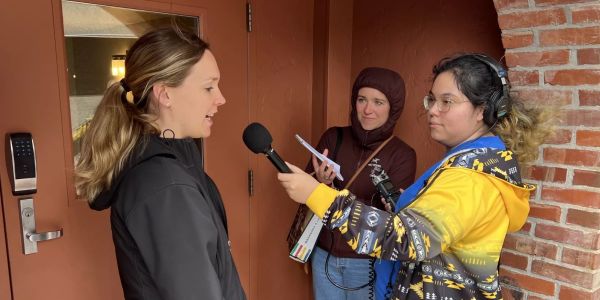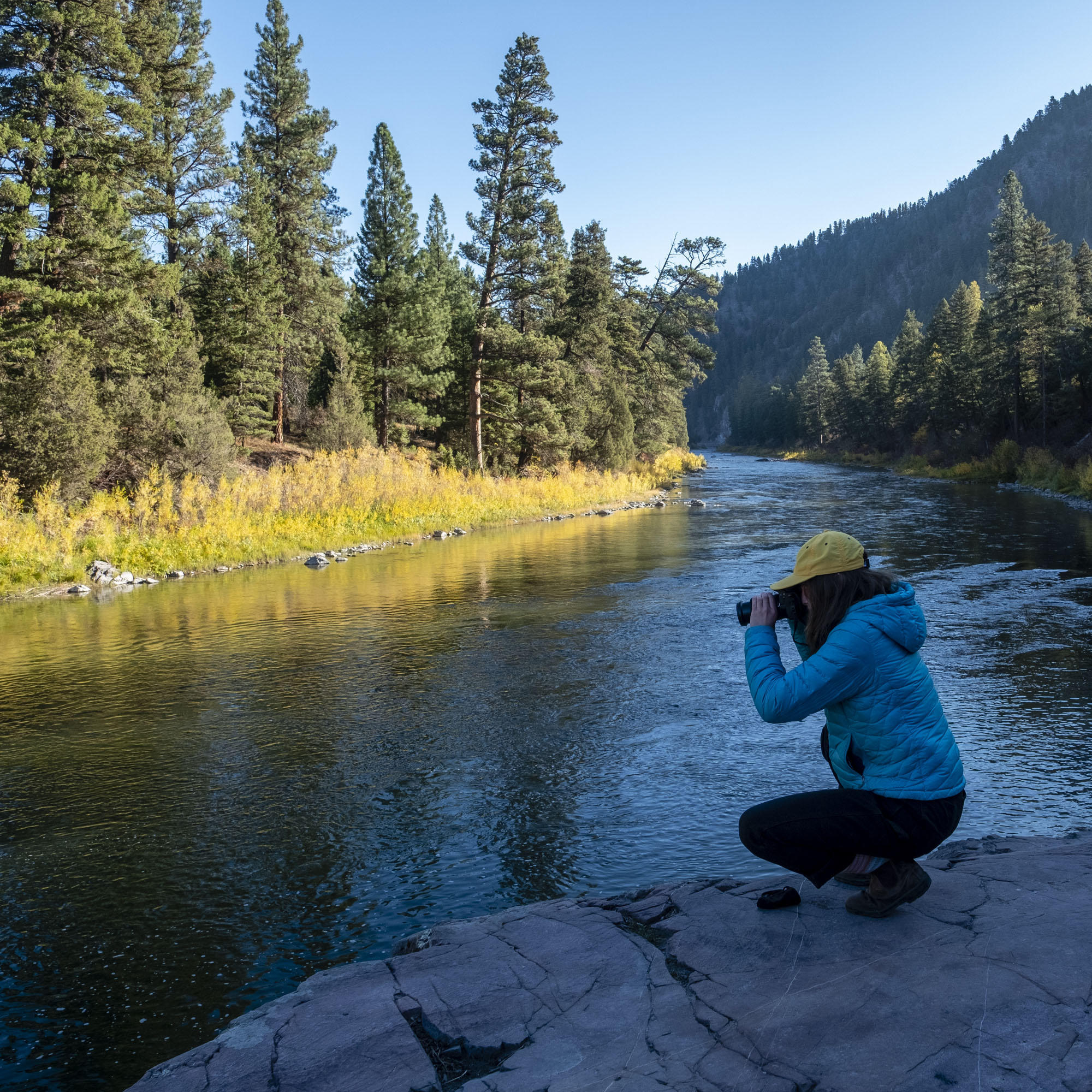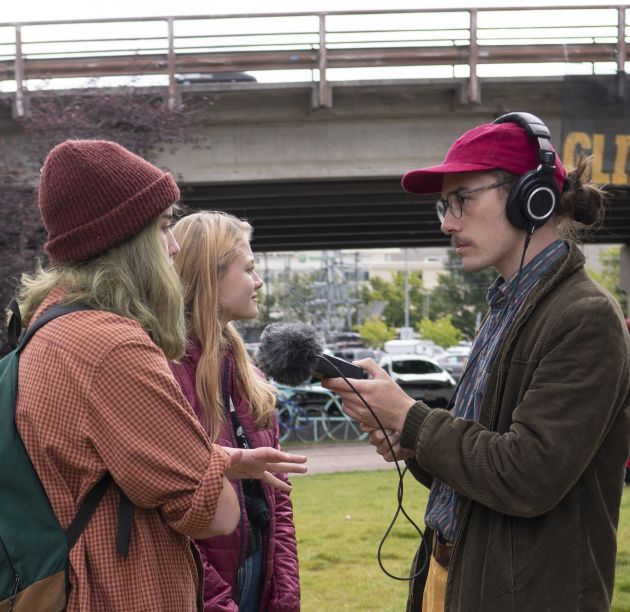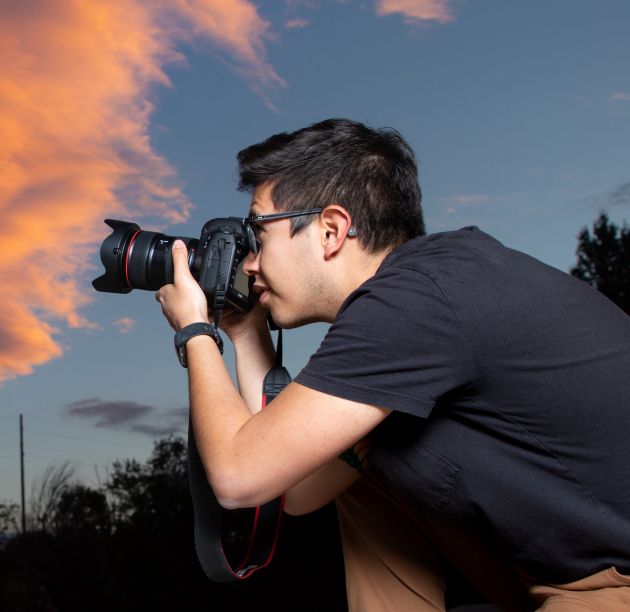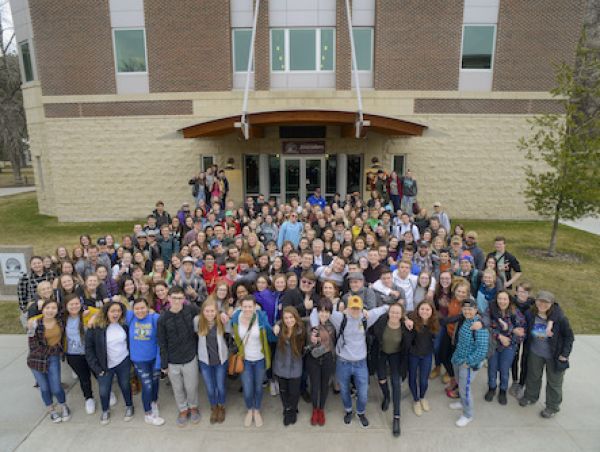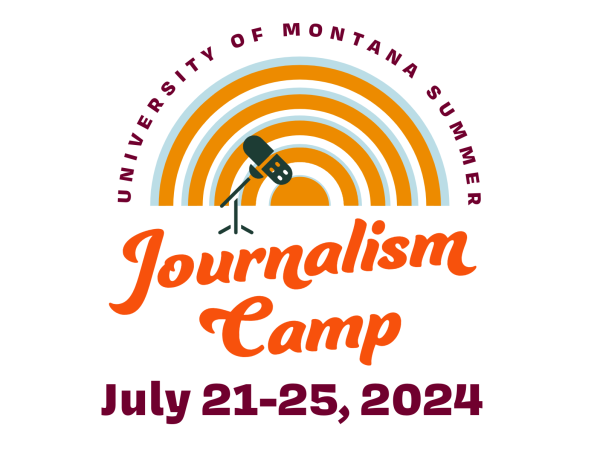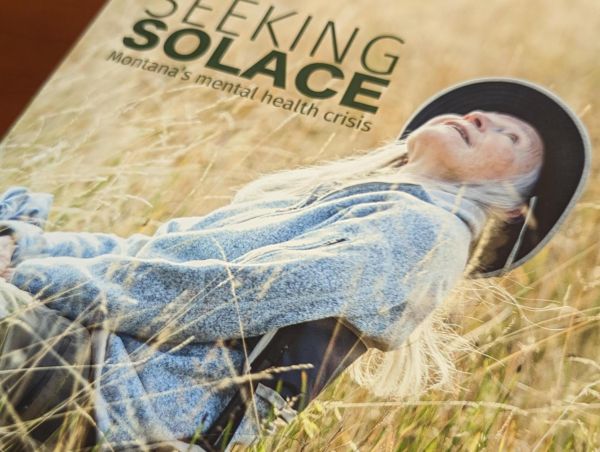A Nationally Top-10 Ranked Journalism School
At the University of Montana School of Journalism, students gain real-world journalism experience that builds them impressive portfolios, gets them their dream careers and wins them national awards. In 2023, the UM J-School was named again in the top 10 of the national Hearst Journalism Awards.
Video: What Makes UM Journalism Special?
The UM J-School's "learn by doing" approach, the personal attention and the rigorous curriculum make our students stand out.

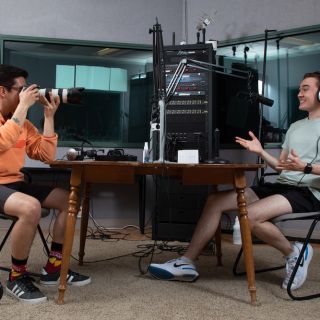
Make Media That Matters
We think the best judge of a journalism program is the quality of the work current students are producing. Our students work on magazines, documentary film, photojournalism projects, newspapers, interactive online publications, TV programs, radio programs and podcasts, most of which are published in conjunction with our many professional partners. Those projects also regularly win big awards, regionally and nationally.
You will end your time here with the kind of experience that will help you stand out, and the professional portfolio to prove it.
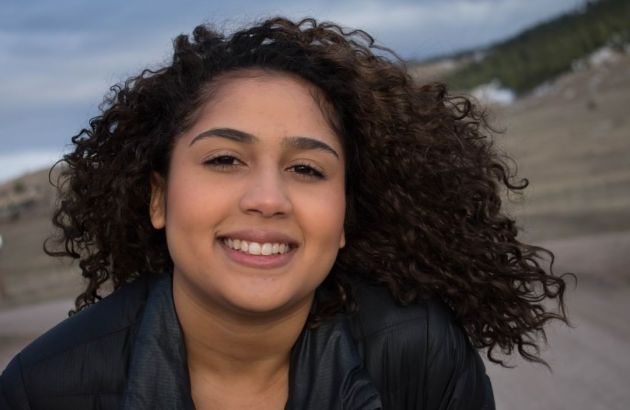

Make a Career
University of Montana School of Journalism graduates are highly sought after in the journalism field and out. Our graduates work at places like NPR, The New York Times, CBS and the Associated Press. They also have senior jobs at companies like Nike and Apple, work in healthcare, education, public relations and communications. They write books, produce podcasts, make films, work at marketing firms and nonprofits and serve their communities in their roles in state, local and national government.
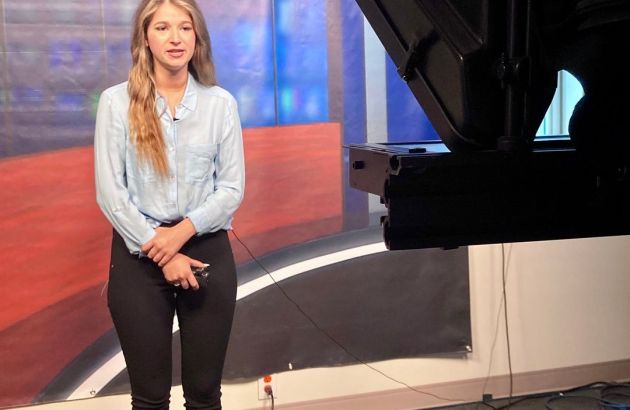

Make Your Own Path
At the University of Montana School of Journalism, you can pick one specific emphasis, like writing, reporting and editing, TV and film, sports journalism, social media, photography, graphic design or audio storytelling and podcasting.
Or, you can do it all. Together with your adviser and your professors, you can craft the kind of college career that fits for you and your plans.
Degree Options
At the School of Journalism, you can pick one specific track, or you can do it all. Click the options at left or below to explore some of the tracks.
Or, click here to learn about all your options
Audio and Podcasting
Audio students anchor the news on the college radio station KBGA, intern for Montana Public Radio and they create original podcasts with some of the nation's best audio journalists, just to highlight a few projects. Click to learn more.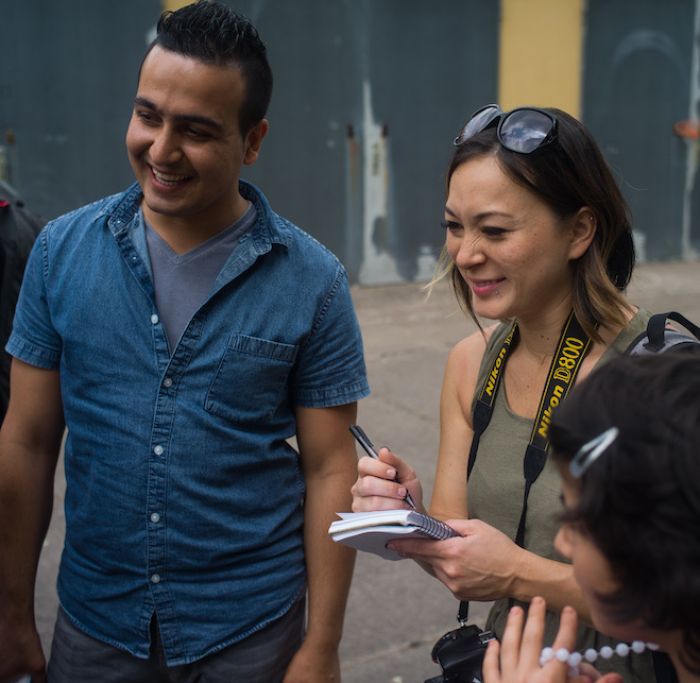
Writing, Reporting and Editing
Our graduates land jobs covering everything from congress to city councils. They inform the public, hold the powerful to account, shed light in dark corners and tell the stories of the people impacted by the news. They end up writing for the likes of the New York Times and small-town weekly publications alike. Click to learn more.
Photo and Visual Journalism
The photojournalism and visual journalism track at the University of Montana School of Journalism is quickly becoming one of the best in the nation. Students in the program regularly compete for national awards while they're in school and big jobs when they graduate. Click to learn more.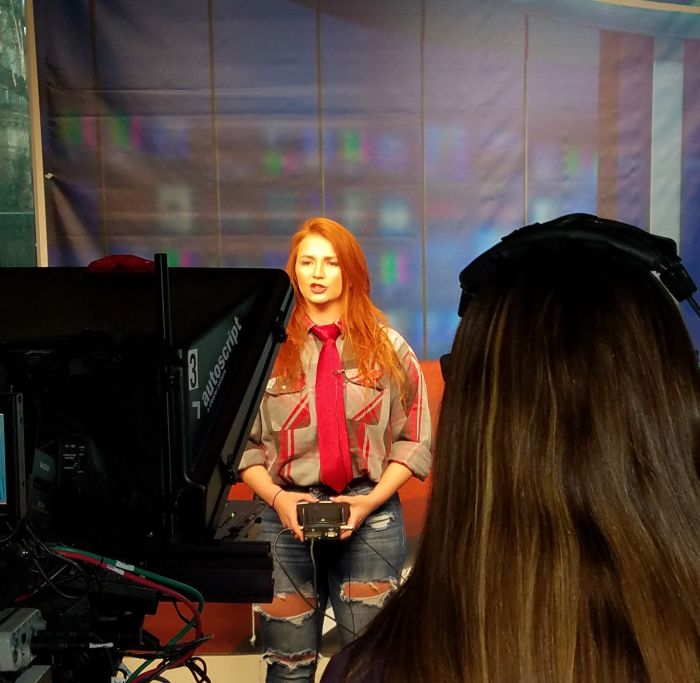
TV and Film
Whether your goal is to be in front of the camera or behind, the TV and film track at the University of Montana School of Journalism will set you up for a bright career in the industry. And, you'll have plenty of options when you graduate. Click to learn more.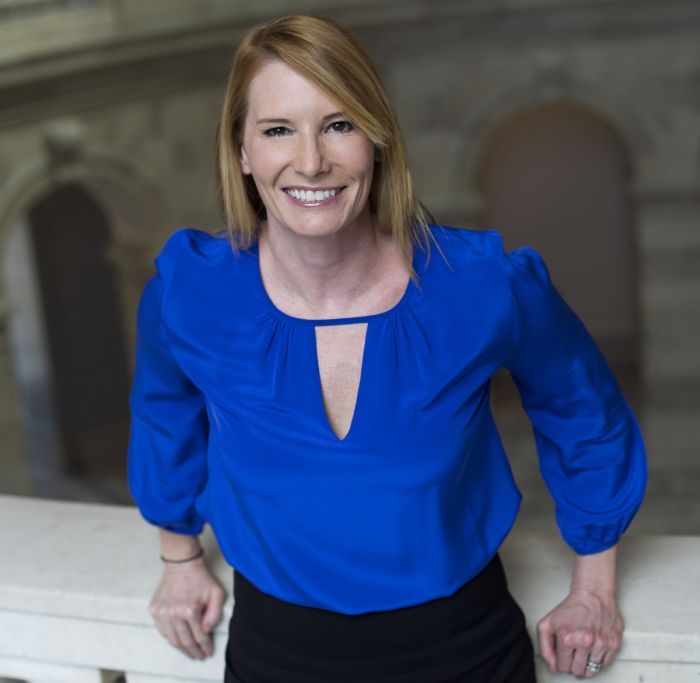
Social Media, Marketing and Public Relations
Click to learn more.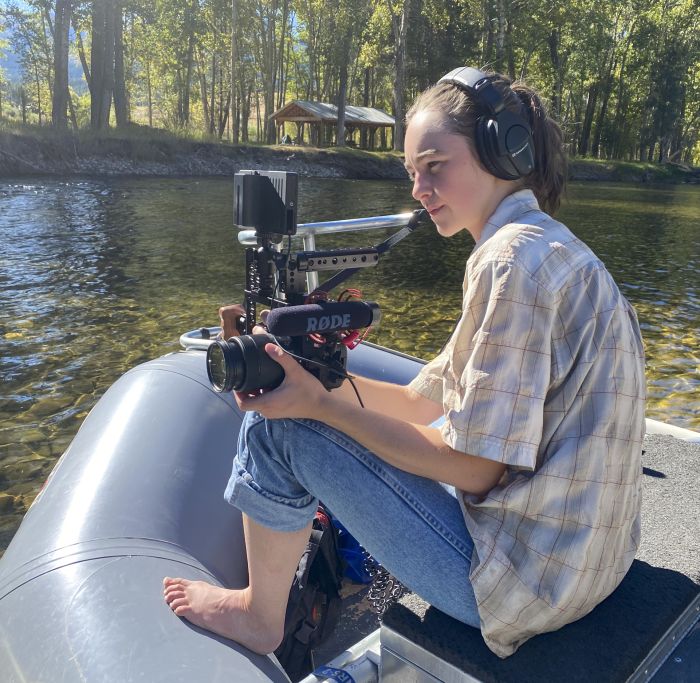
All Tracks
One of the best things about our curriculum is its flexibility. Click to explore all options.Degree Options
In keeping to our philosophy that journalism is best taught in real life, students studying audio, radio and podcast journalism at the University of Montana hit the airwaves early in their college careers. They anchor the news on the college radio station KBGA, they intern as writers, reporters and hosts for Montana Public Radio, they create original podcasts with some of the nation's best audio journalists and they report daily for some 200 broadcasters from the Montana Legislature, just to highlight a few projects.
More information on the Audio track webpage
Job and Career Opportunities
 Audio journalism is a rapidly-growing field. The Bureau of Labor Statistics estimates a 10% job growth in the next decade for broadcast, sound and video experts. And recent research from the Pew Research Center shows that demand for radio remains high, with 83% of Americans turning to radio every week and and a "substantially increased" podcast audience. More than 41% of Americans report listening to podcasts at least once a month, up from 9% in 2008.
Audio journalism is a rapidly-growing field. The Bureau of Labor Statistics estimates a 10% job growth in the next decade for broadcast, sound and video experts. And recent research from the Pew Research Center shows that demand for radio remains high, with 83% of Americans turning to radio every week and and a "substantially increased" podcast audience. More than 41% of Americans report listening to podcasts at least once a month, up from 9% in 2008.
Just some of the of jobs you'll be ready for after completing the audio track at the University of Motnana School of Journalism include: Reporter, Producer, Host, News Director, Script Writer, Podcaster, Editor, Audio engineer
The Student Experience

Senior Peyton Butler was sold on the audio track after interning for Montana Public Radio, which is housed at UM. She’s has also worked as the media director at the university radio station, KBGA, and as an intern with a podcast called Stories for Action.
Some of her best advice?
"I ... think just getting to know your professors is a really good way to get things done and to get knowledge that you might not even necessarily get from class. I’ll ask [Professor] Jule Banville questions about things I’m doing at KBGA and she’ll be like: ‘oh, you should try this.’ So just getting to know your professors and kind of building that relationship with them. And they can help you out a lot."
Recent Alumni

Nicky Ouellet, associate producer, NPR’s the Indicator
Nora Saks, producer, WBUR Podcasts, creator of award winning “Richest Hill” podcast
Autumn Barnes, producer, Hidden Brain podcast
Austin Amestoy (pictured at left), reporter and host, Montana Public Radio
Freddy Monares, KNKX Public Radio, Seattle
Shaylee Ragar, Capitol reporter, Montana Public Radio
Nathan Rott, reporter, NPR:
"The skills you learn at the J-School: how to write, how to think critically, how to ask smart questions, how to work on a deadline ... people are counting on you. Those are all things that are applicable to all careers.”
NPR reporter Nathan Rott
Being able to communicate well is the foundation of any solid career. Add to that the skills you build as a reporter -- finding, sorting and sifting information, building relationships, asking the right questions, just to name a few -- and you are well on your way to being sought after in any industry.
More information on the Writing and Reporting track webpage
Jobs and Career Options
 Graduates from the writing and editing track find careers in journalism as reporters and editors, uncovering the truth and holding the powerful to account.
Graduates from the writing and editing track find careers in journalism as reporters and editors, uncovering the truth and holding the powerful to account.
But, they also go into public relations, communications, public service, politics and the business sector, finding job as copy writers, speech writers, marketers, grant writers, web editors, etc.
Erin Billings, MA '95, first worked as a reporter and editor before moving to the public relations field and is now the senior vice president of communications and public affairs for the Global Strategy Group in D.C. She says:
“Writing is one of the most important skills for any professional, no matter what path they choose. The J-School taught me how to write well, write thoughtfully, with precision and accuracy. The J-School also taught me to be curious, ask the right questions, and arrive at smart solutions. I use these skills every day, both professionally and personally.”
Just some of the jobs this track will prepare you for include: Reporter, Editor, Copy editor, Magazine writer, Freelance writer, Sports writer, Feature writer, Author, Copy writer, Author
The student experience
 As a writing or editing student at the School of Journalism, you'll get writing early and by the time you graduate, you'll have a full portfolio of professional clips on which to build your career.
As a writing or editing student at the School of Journalism, you'll get writing early and by the time you graduate, you'll have a full portfolio of professional clips on which to build your career.
In the classroom, students gain experience reporting, writing and editing for capstone projects like Byline Magazine, published in the fall, and the Montana Native News project, which investigates issues in Montana's Indigenous communities each spring.
Another way students get real-world experience early in their college careers is through the independent student newspaper, the Montana Kaimin.
So says Emily Tschetter (pictured here), who got her start on the student newspaper in her first year.
"It’s 100%, the biggest thing that has set me apart from other journalism students. I’m only 19. And I got a pretty competitive internship and it would not have happened without the Kaimin. I think that it’s really hard, but it’s the single best way to build up your portfolio and get real on the ground experience while you’re taking your classes," Tschetter said.
Recent Alumni
 Michael Wright, editor, Bozeman Daily News
Michael Wright, editor, Bozeman Daily News
Nate Schweber, writer, New York Times, and author
Lucy Tompkins, (pictured at right) fellow, New York Times
Ryan Divish, Mariners beat writer, Seattle Times
Luella Brien, founder, editor and publisher of Four Points Press
Jacob Baynham, freelancer magazine writer
Allison Bye, publication designer
Kevin Van Valkenburg, senior writer, ESPN
Kellyn Brown, founding editor-in-chief, Flathead Beacon
Danny Davis, sports writer, Austin American-Statesman
Holly Michels, chief of the Montana State News Bureau, Lee Montana Newspapers
The photojournalism and visual journalism track at the University of Montana School of Journalism is quickly becoming one of the best in the nation. With ample opportunities to document right in our backyard, the program is especially strong in outdoor, travel and recreation photography. Students in the program regularly compete for national awards while they're in school and big jobs when they graduate.
More information on the Photo and Visual Journalism track webpage
Jobs and Career Opportunities
 The job market for photographers continues to grow. The Bureau of Labor Statistics is forecasting a 9% increase in the job outlook in the next year. When you study photojournalism and visual journalism at the University of Montana School of Journalism, you graduate with a portfolio full of professional clips that will help you stand out from the crowd.
The job market for photographers continues to grow. The Bureau of Labor Statistics is forecasting a 9% increase in the job outlook in the next year. When you study photojournalism and visual journalism at the University of Montana School of Journalism, you graduate with a portfolio full of professional clips that will help you stand out from the crowd.
A few of the jobs that our graduates find after graduation include: Breaking news photographer, Feature photographer, Magazine photographer, Filmmaker, Commercial photographer, Documentary photographer, Photo editor, Photo director
The Student Experience
 Photojournalism, including film and video journalism, is a particularly strong program at the University of Montana School of Journalism. UM students regularly compete for top national awards in photojournalism and multimedia categories, including in the national Hearst Awards and Society of Professional Journalists' contests.
Photojournalism, including film and video journalism, is a particularly strong program at the University of Montana School of Journalism. UM students regularly compete for top national awards in photojournalism and multimedia categories, including in the national Hearst Awards and Society of Professional Journalists' contests.
Students get real-world experience starting in their first beginning visual journalism class and then in capstone projects like Native News, Byline Magazine, student documentary and intermediate and advanced visual journalism.
All that hands-on experience gives students a chance to build impressive portfolios, but also, meaningful connections.
"The biggest thing that I’ve learned is connections are super important," says student Ridley Hudson (pictured here). "The J-School and professors are a great place to start with that. And getting involved in the J-School is really important because getting involved, you make connections, and then connections lead you to connections that lead you to further opportunities down the road."
Alumni
 Brontë Wittpenn, (pictured at right, middle, covering Standing Rock while at UM) staff photojournalist, San Francisco Chronicle
Brontë Wittpenn, (pictured at right, middle, covering Standing Rock while at UM) staff photojournalist, San Francisco Chronicle
Tommy Martino, photographer, University of Montana
Tailyr Irvine, (pictured at right, right)independent and documentary photographer, 2019 National Geographic Explorer
John Locher, photographer, Associated Press
Louise Johns, documentary photographer
Evan Frost, (pictured at right, left) photographer, Minnesota Public Radio
 Whether your goal is to be in front of the camera or behind, the TV and film track at the University of Montana School of Journalism will set you up for a bright career in the industry.
Whether your goal is to be in front of the camera or behind, the TV and film track at the University of Montana School of Journalism will set you up for a bright career in the industry.
And, you'll have plenty of options when you graduate. Jobs in this business abound. The Bureau of Labor Statistics estimates that the job market for producers and directors will grow 8% in the next decade and the market for film editors and camera operators will increase 12%.
More information on the TV and Film track webpage
Our graduates land jobs as anchors and reporters, producers, directors, editors and web producers. Here are just some of the jobs you'll be prepared for if you choose this track at the UM J-School: Video/Film editor, Documentary filmmaker, Web producer, Anchor, Director, Technical Director, Reporter, Host, Producer, Multi media journalist, Social media editor/producer, Videographer
The Student Experience
 As a student in the TV and film track, you'll get into the studio and behind the camera at the start. You'll work on daily news and documentaries. You'll report and anchor and run the camera. And, you'll also get to work on what fires you up.
As a student in the TV and film track, you'll get into the studio and behind the camera at the start. You'll work on daily news and documentaries. You'll report and anchor and run the camera. And, you'll also get to work on what fires you up.
Broadcast student Meghan Fatouros says this:
"...that’s what I love about the J-School is there so much creative freedom. It’s not one of these things where: ‘here’s the rubric, here’s the themes I’m looking for.’ It’s like: ‘what are you passionate about? Go out there and do it. Learn by doing.’"
Her advice for prospective students?
"Don’t be afraid to change and [change] is always going to be coming your way. Life is done through such a zigzag pattern. And the journalism school will [support] you. You don’t have to fit this certain mold."
Notable Alumni

Maritsa Georgiou, reporter/anchor, Newsy
Shane Bishop, producer, Dateline
Erik Olson, digital content producer, KTVQ Billings
Meg Oliver (pictured at left), news correspondent, CBS News
Breanna McCabe, TV producer and documentary filmmaker, Montana PBS
"The best thing about the UM J-school training was that it was hands on! Everything we did in the classroom we used in the field. When I looked around for Journalism schools UM stood out to me for their hands-on approach and the amazing professors they had on hand."
Meg Oliver
In the the social media, marketing and public relations track at the University of Montana School of Journalism, students learn journalism skills and then how to put those skills, like writing, reporting, graphics, design, video and photography into practice on social media and in marketing, communications and public relations work.
More information on the Social Media track webpage
Jobs and Career Opportunities
 Many of the graduates from the University of Montana School of Journalism find jobs in social media, marketing and public relations. They stand out because at the J-School, they train to be careful communicators, excellent writers and dynamic storytellers.
Many of the graduates from the University of Montana School of Journalism find jobs in social media, marketing and public relations. They stand out because at the J-School, they train to be careful communicators, excellent writers and dynamic storytellers.
Thea Bergeron is a senior creative producer at Nike and freelance film producer. She says the storytelling is at the heart of her work:
“My favorite part of the job is telling a story."
Some of the other jobs our graduates land after they graduate include: Communications director, Social media editor, Social media producer, Media buyer, Account manager, Media director, Marketing director, Digital marketing specialist, Public relations director, Creative producer
The Student Experience
 Students who take the social media, marketing and public relations track learn the business side of journalism and the journalistic side of business, marketing and public affairs. In project classes students are encouraged to take on roles like social media editor or online editor in extra curricular activities, like the student newspaper, the Montana Kaimin, or at the college radio station, KBGA, where students can gain experience as the business manager.
Students who take the social media, marketing and public relations track learn the business side of journalism and the journalistic side of business, marketing and public affairs. In project classes students are encouraged to take on roles like social media editor or online editor in extra curricular activities, like the student newspaper, the Montana Kaimin, or at the college radio station, KBGA, where students can gain experience as the business manager.
Take the experience of recent grad Mariah Karis, for instance. Mariah majored in journalism, but also took classes in communications and marketing. She also started her own business and pitched it as part of UM's Blackstone Launchpad, a program on campus aimed at helping students develop their entrepreneurial skills. She also served as the business manager at the Kaimin and took on the role of social media manager in her project classes. All of this helped her become even more multi-talented and skilled in just about any task she takes on.
She said:
"I think what interests me about business is when you strip it down, it’s not super complicated. But it’s almost like the power of different businesses resides in the people that understand this set of terminology. And so I feel like if I could be a person that is the bridge between the creative and the business, and I can like see both sides, I think there’s some really cool power in that. Because you can hear the creative vision, but also hear like: ‘okay, but we need to do X, Y, and Z to make sure we can still financially afford it.’ I think, as a leader, it’s a really cool and important place to be in where you can see both sides."
Alumni
 Erin Billings (pictured at right), senior vice president of communications and public affairs, Global Strategy Group
Erin Billings (pictured at right), senior vice president of communications and public affairs, Global Strategy Group
Carol Kruger, senior vice president, The Wendt Agency
Jim Messina, CEO at The Messina Group, former White House Deputy Chief of Staff.
Thea Bergeron, senior creative producer at Nike
Jaime Berg Cady, manager, marketing and communications at Children's Hospital Colorado Foundation
Joe Kolman, research & environmental policy director, Montana State Legislative Service Division
